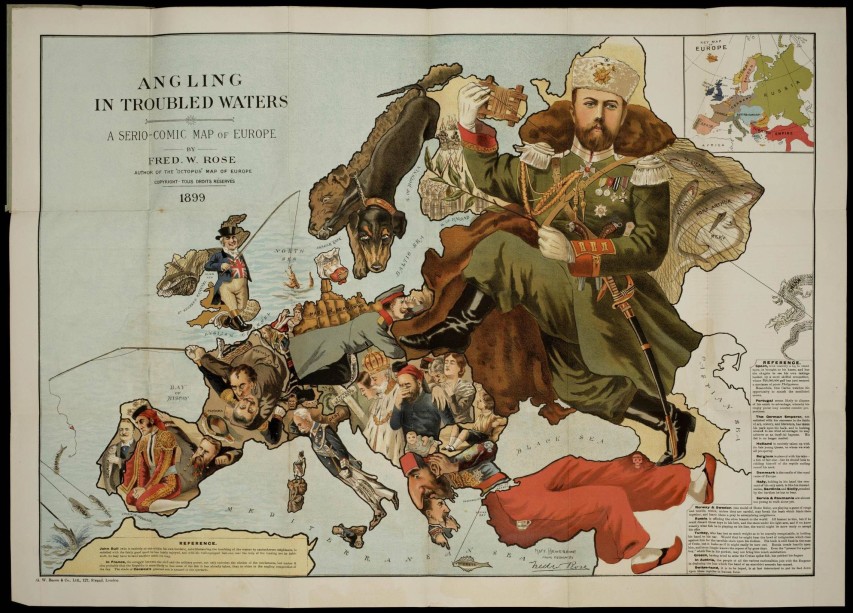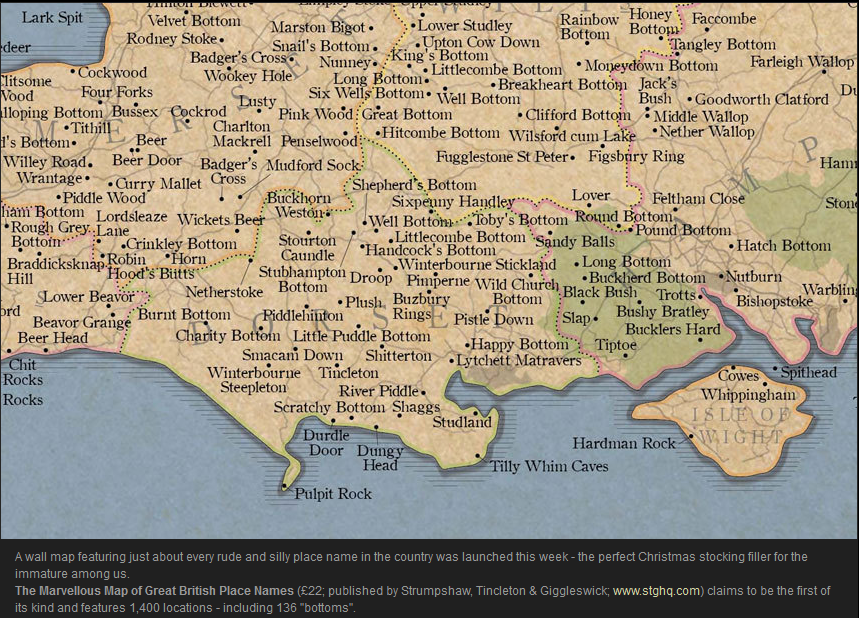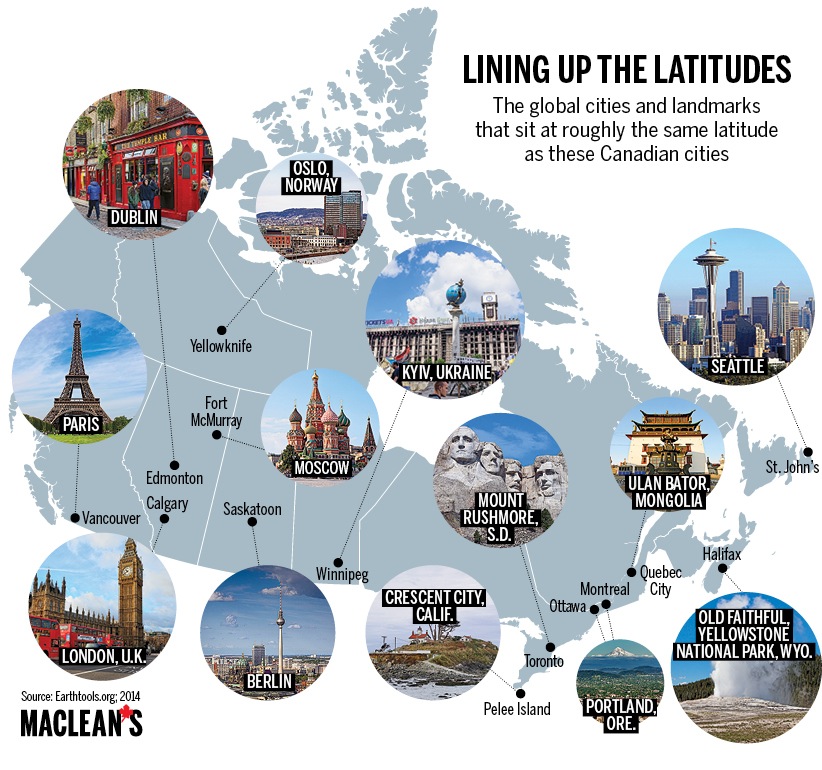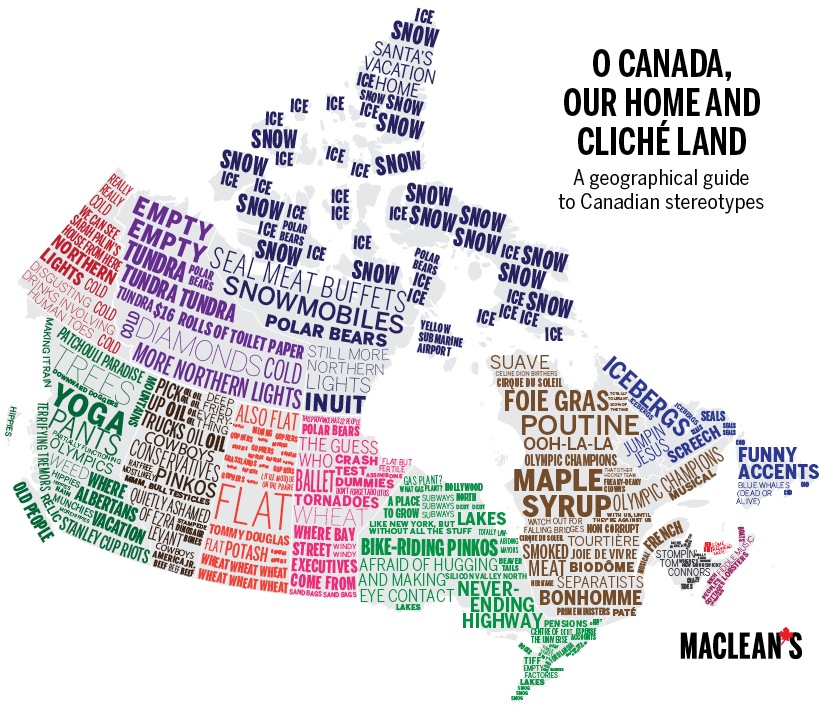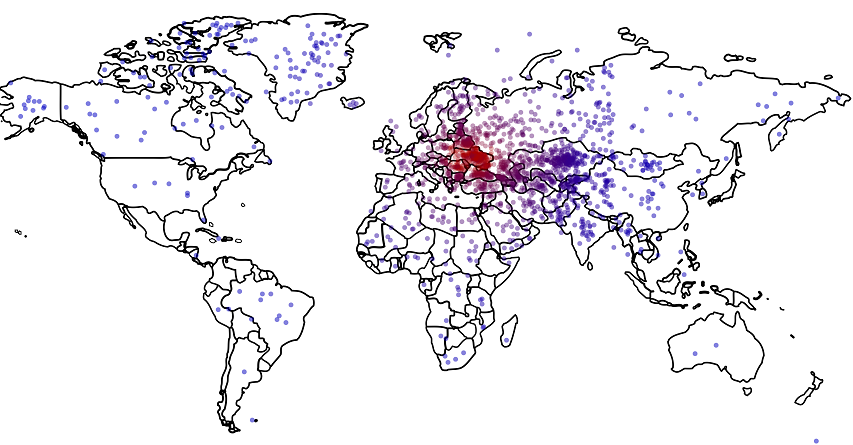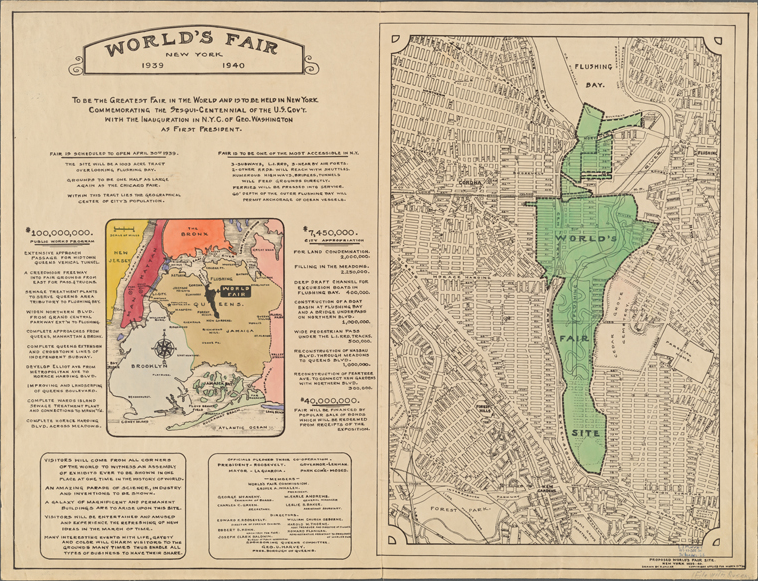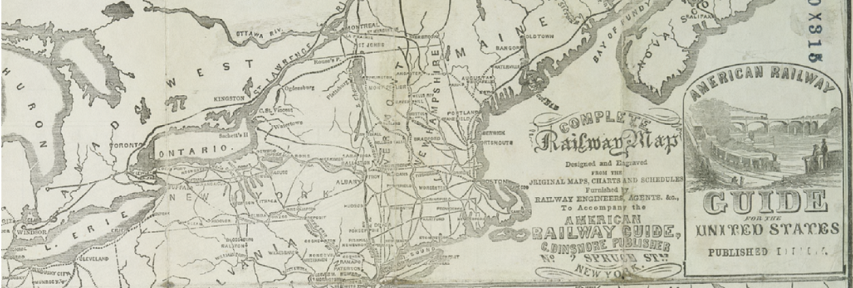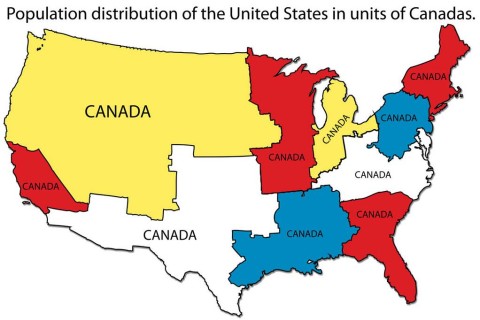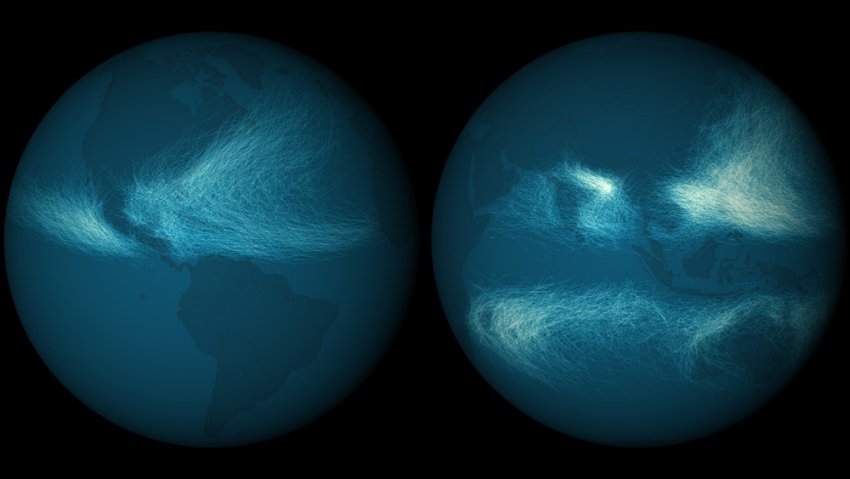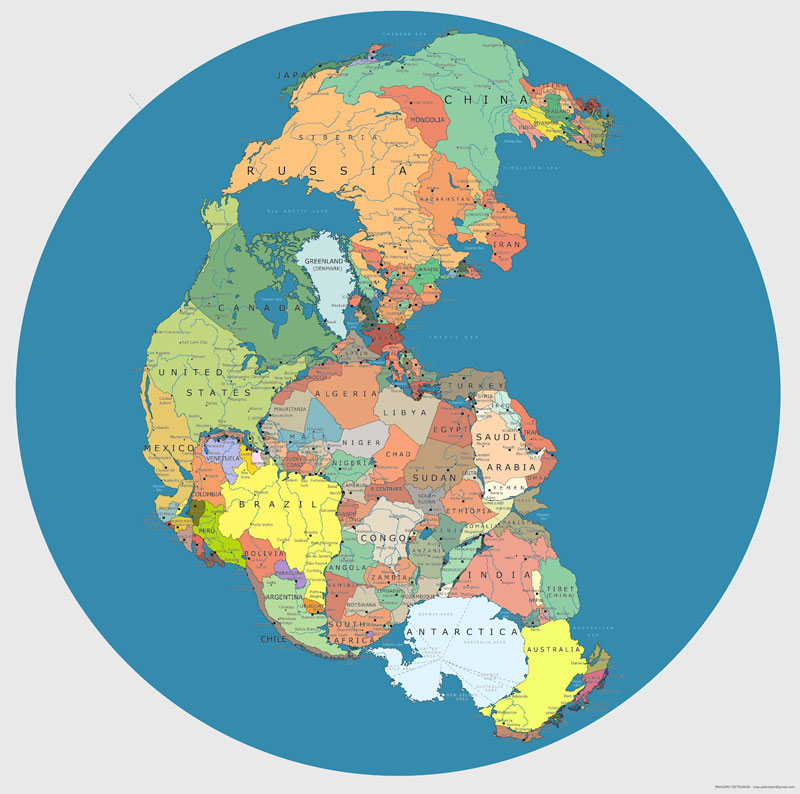H/T to AEI for the link.
September 7, 2015
February 14, 2015
Europe in 1899, according to Fred W. Rose
Before the modern age of the infographic, artists like Fred W. Rose still had their own idiosyncratic ways to present as much information as they could for a wider audience:
H/T to Tam for the link.
November 23, 2014
The odd names of Britain – now available as a wall map
Like most denizens of North America, I’ve sometimes stumbled upon odd village names in Britain. There are some weird and daffy names still in use in the UK and you can now get a wall map highlighting a large number of them:
H/T to Jessica Brisbane for the link.
November 9, 2014
A Viking view of Europe, circa 1000AD
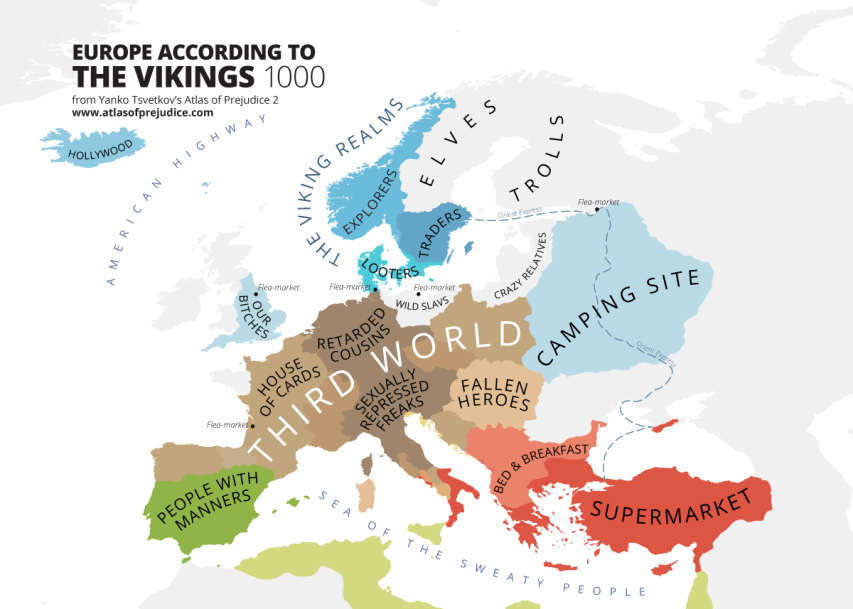
Europe According to the Vikings (1000) from Atlas of Prejudice 2 by Yanko Tsvetkov.
H/T to Never Yet Melted for the link.
September 24, 2014
Britain is big on Minecraft
Er, sorry, I mis-spoke there … Britain is big in Minecraft:
Blighty’s Ordnance Survey organisation has updated the country’s map in Minecraft, adding roads, national rail networks and houses to the digital overview.
A plucky intern at the mapping org stuck Britain into the vastly popular game this time last year. Now that he’s bagged himself a full-time position on the grad scheme, Joseph Braybrook decided to add 83 billion bricks to the map, which is now so detailed that folks can find their houses on it.
“The terrain has been doubled in scale to provide more detail. It uses 1:25 000 scale OS VectorMap District to give a smoother, more expansive appearance that is closer to real life,” Braybrook explained.
“The water features now appear in sharper detail, too, so you can see individual streams and tributaries coming off rivers. The forests and woodlands are now populated with generated trees, and the national rail network has been added. I’m looking forward to seeing if people eventually build a working railway system in game,” he added.
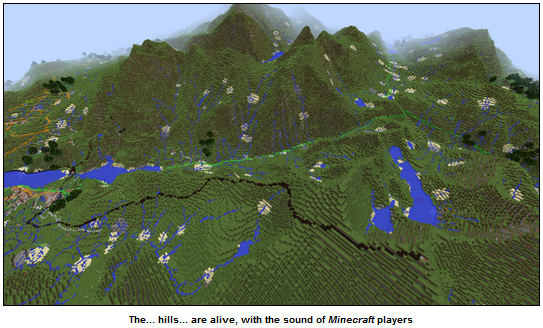
June 29, 2014
Maclean’s puts Canada on the map, sorta
For Canada Day, Maclean’s tries portraying the country in various different ways:
Happy Canada Day! For a different perspective on the country this year, Maclean’s went to the maps. Drawing on a variety of sources, from government statistics to various online databases to tweets, here are some maps to illustrate Canada as you’ve never seen it before.
[…]
It’s always a surprise when people first learn that the very tip of southwestern Ontario is at a lower latitude than parts of California — which got us wondering: How do other parts of the country line up with the rest of the world? Here are the results, using Earthtools.org. Most of the cities on this map, and their global counterparts, lie within less than 50 km of each other, latitudinally speaking, of course. Only Quebec-Ulan Bator and Fort McMurray-Moscow are a full degree apart.
[…]
What to say? Canada is a land of contrasts. It also offers up a bounty of clichés.
April 8, 2014
Map of the day
Here’s an interesting map. What do you think it shows? An epidemic? Outbreaks of zombies? Incidents of flashmobbing?
The real answer is this shows where participants in an American survey plotted the location of Ukraine. The headline of the story is “The less Americans know about Ukraine’s location, the more they want U.S. to intervene“.
Where’s Ukraine? Each dot depicts the location where a U.S. survey respondent situated Ukraine; the dots are colored based on how far removed they are from the actual country, with the most accurate responses in red and the least accurate ones in blue. (Data: Survey Sampling International; Figure: Thomas Zeitzoff/The Monkey Cage)
I’m not sure which responses worry me the most: the ones that show Ukraine in “flyover country”, Alaska, or Greenland or those that show Ukraine as an underwater modern-day Atlantis…
Update 10 April: I’m kicking myself for forgetting this Bierce quote.
Seems like that @monkeycageblog post on Ukraine should have brought up Ambrose Bierce: "War is God's way of teaching Americans geography."
— Justin Logan (@JustinTLogan) April 10, 2014
April 2, 2014
Mapaholics rejoice!
The New York Public Library has released over 20,000 historical maps under a Creative Commons license:
Lionel Pincus & Princess Firyal Map Division is very proud to announce the release of more than 20,000 cartographic works as high resolution downloads. We believe these maps have no known US copyright restrictions.* To the extent that some jurisdictions grant NYPL an additional copyright in the digital reproductions of these maps, NYPL is distributing these images under a Creative Commons CC0 1.0 Universal Public Domain Dedication. The maps can be viewed through the New York Public Library’s Digital Collections page, and downloaded (!), through the Map Warper. First, create an account, then click a map title and go. […]
What’s this all mean?
It means you can have the maps, all of them if you want, for free, in high resolution. We’ve scanned them to enable their use in the broadest possible ways by the largest number of people.
Though not required, if you’d like to credit the New York Public Library, please use the following text “From The Lionel Pincus & Princess Firyal Map Division, The New York Public Library.” Doing so helps us track what happens when we release collections like this to the public for free under really relaxed and open terms. We believe our collections inspire all kinds of creativity, innovation and discovery, things the NYPL holds very dear.
October 19, 2013
Amusing maps – US population distribution in units of Canadas
You can find the most interesting things on Twitter. Here’s @Amazing_Maps with a map of the United States divided up into units of Canadas:
September 13, 2013
QotD: The constant theme of British battles through history
I have a theory that, while the battles the British fight may differ in the widest possible way, they have invariably two common characteristics — they are always fought uphill and always at the junction of two or more map sheets.
Field Marshal William Slim, “Aid to the Civil”, Unoficial History, 1959.
August 28, 2013
Hurricane and cyclone paths since 1842
Wired‘s MapLab has a lovely visualization of both hurricane and cyclone tracks starting with the earliest records in 1842:
This map shows the paths of every hurricane and cyclone detected since 1842. Nearly 12,000 tropical cyclones have been tracked and recorded, and the National Oceanic and Atmospheric Administration keeps them all in a single database. Long-term datasets can be really interesting and scientifically valuable, and this one is undoubtedly both.
In the image above, you can clearly see that more storm tracks have overlapped in the western Pacific ocean and northern Indian ocean. This is largely because of the length of the typhoon season, which basically never stops in the warmer waters there.
The tracks of the earliest storms are based on mariner’s logs and storm records, collected from various countries, agencies and other sources. Reconciling data from these different entities was tough. Most international agencies had their own set of codes for cyclone intensity, and only recorded this information once per day. India was even using different wind thresholds to designate cyclone stages.
August 24, 2013
The supercontinent of Pangaea with modern borders
From TwistedSifter:
Pangaea was a supercontinent that existed during the late Paleozoic and early Mesozoic eras, forming about 300 million years ago. It began to break apart around 200 million years ago. The single global ocean which surrounded Pangaea is accordingly named Panthalassa.
July 27, 2013
Plan your travels so you’re always close to good beer
While I haven’t been travelling much in the last few years, I always appreciate the chance to sample the local wines and beers in the regions I visit. Wired Mapland looks at some mapping projects to make that even easier (for craft beer, anyway):
Researching a recent business trip to San Diego (okay, not entirely business), I checked out two of them: The Beer Mapping Project, and Brewery Map. Both utilize Google’s map API (short for application programming interface, the set of programming instructions that enables developers to build new websites and apps that tap into an existing website’s data and functions), and they’re both easy to use: type in a location, and a map and list appear telling you what’s nearby. Brewery Map has Android and iPhone apps; several independent apps use the Beer Mapping Project’s API.
“The big reason we do what we do is we think it’s important, especially with the craft beer culture that’s growing, that people get out there and connect with the beer they like to drink, and help promote small businesses making craft beer, and meet the people who are making the kind of beer they like,” said Jason Austin, one of the trio of beer-loving developers behind Pint Labs, which created Brewery Map and the database behind it, BreweryDB.com.
Both sites rely on users to enter data, from plugging in the addresses and hours of existing brewpubs to adding new ones as they crop up. That means the sites are more useful in areas with more craft beer drinkers and can be a bit spotty elsewhere. It also means the more people who use them, the better they’ll get.
Here’s a brief review of their relative strengths and weaknesses:
The Beer Mapping Project. WIRED: Lets you filter search results by type, making it easy to distinguish breweries from brewpubs, bars, and stores that sell microbrew. Click on a pin, and a window pops up with the official website, as well as links to reviews on BeerAdvocate and RateBeer. You can also look up homebrew stores. There are international maps too. TIRED: Beer trip planner isn’t very intuitive. Or maybe it doesn’t work. I got tired of trying to figure it out.
Brewery Map: WIRED: Great beer trip planner. Plug in two destinations and use a pulldown menu to indicate how far out of your way you’re willing to go for microbrew (see map above). TIRED: Designated driver not included. All the pins look the same, so if you want to find, say, a brewpub that serves food, you’ll have to do some extra Googling.
Should I decide to drive all the way to Minneapolis to catch a Vikings home game, here’s the high-level view of my trip according to BreweryMap:
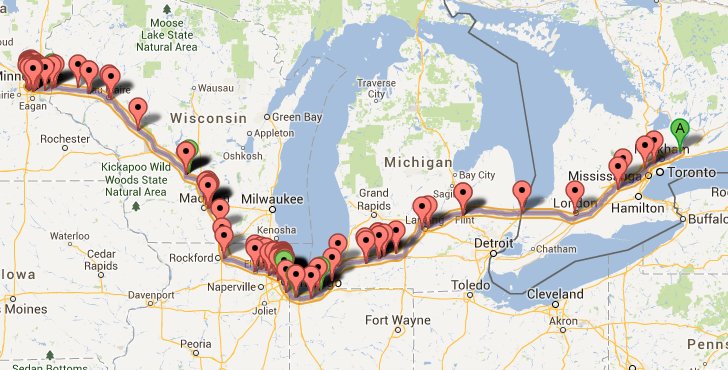
If I’d already arrived at my destination, the Beer Mapping Project comes to my thirsty aid:
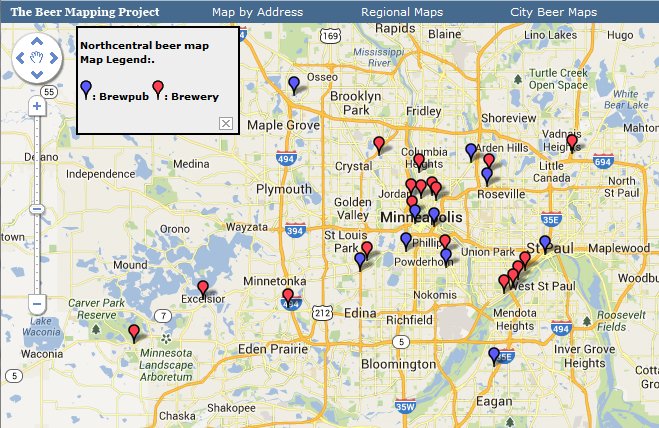
July 17, 2013
World’s largest cartography class commences
Greg Miller interviews the instructor of the biggest single cartography class … a vast online class of nearly 30,000 people:
Wired: How did you get interested in geography?
Anthony Robinson: I started my undergraduate education as an electrical engineering major. Then I just randomly took a human geography class, and it completely woke me up. Right away I knew I wanted to be a geographer.
[…]
Wired: What was the motivation for the MOOC?
Robinson: Here at Penn State I direct our online geospatial education programs. I was able to make the argument that this is needed. There isn’t one yet, and I’m sure there’s a lot of untapped interest in this stuff. When I meet someone on a plane and tell them I’m a geographer, they’re like “What?” They don’t even realize that’s a thing. Something like a MOOC, that’s free and has a high profile, might get more people interested in what we do.
Wired: Why is it just happening now?
Robinson: One thing that really helps right now is we’re past the age of having mapping software that takes you weeks and weeks to have the basics. The software I’m using in the course, ArcGIS Online, works in a browser. It’s very usable. It’s not perfect but it’s quite good. Also, there are tons of datasets that are available now and searchable. Those are things we spent weeks and weeks on even when I was an undergrad, and that wasn’t that long ago. The technology threshold that it takes to make a map and do some spatial analysis has now ratcheted down to the point where it’s possible to do this with people all over the world working on different technology platforms. I don’t think I could teach this class even two years ago.
July 12, 2013
Mapping the latest British defence “disgrace”
Sir Humphrey on the mapping uproar:
Several UK newspapers reported this week the findings of the UK Parliaments Intelligence & Security Committee report that during OP ELLAMY, the UK had relied on Germany to provide mapping for the RAF to conduct its missions. This was apparently a disgraceful sign of a nation in decline and that we should all be jolly ashamed of ourselves.
The reality (as ever!) is a little different and one worth thinking about. Maps are something that we all take for granted in our daily lives, and they are an utterly indispensable part of modern military operations (even in the hands of a newly appointed young officer). We perhaps take for granted the information on them, without considering how it is obtained. In the UK the Ordnance Survey has over many hundreds of years done a phenomenal job of providing accurate information almost down to the last manhole cover about what lies where. At sea the Hydrographic Service has similarly spent many hundreds of years charting the oceans and waters of the planet — it is not an exaggeration to say that in some of the more remote parts of the globe, the only charts in use date back to the surveys done by Captain Cook or other explorers. As a national asset the Hydrographic Office in particular is absolutely priceless — very few nations run credible hydrographic programmes beyond the UK, US, Russia and China. The Royal Navy, with its extremely effective and very hard worked survey fleet has been able to become a global leader in providing accurate chart information to the world — indeed many countries are enormously reliant on the UK for providing charts for their warships.
But, to put a map or chart together is an enormously complicated piece of work which takes a lot of time and effort. No country on earth currently has the resources to provide a truly global and accurate mapping capability of all the nations and areas that it may need military mapping for. Its not just a case of putting down some generic top level mapping and hoping that’s enough — modern military operations require a lot of detail, and to be able to work effectively, mapping is needed at a very high level of detail. When it comes to targeting, knowing whether a particular target is located at grid reference 123456, or 12345678 can make a huge difference — precision weapons nowadays mean that the chances of hitting the intended spot are much higher than ever before. This means you can destroy a critical node or facility without necessarily doing much in the way of wider damage, which makes rebuilding efforts easier, and also reduces the risk of civilian casualties.
[. . .]
The irony is that amidst the anguish over using German maps, the article skims over the wider point that Defence Intelligence appears to be losing several hundred posts. It is not commonly realised that the DI is responsible for the provision of geographic information to the military, currently via the Defence Geographic Centre in Feltham (for more information see LINK HERE). This sort of service is crucial to help the MOD maintain an edge on operations — it isn’t just about having a good set of weapons, but the ability to know where you are, where you are going and how you can have the best possible military effect that matters. Ironically the papers that got the most irate about the news the UK was relying on the Germans were also the same papers that call the most loudly for ever more civil servants to be fired. The problem is that the people working at the DGC are exactly the sort of civil servants who are not pen pushers, who make a massive, near immeasurable difference to UK security, and who face considerable uncertainty in the future. We perhaps forget at our peril that just because someone doesn’t wear uniform, it doesn’t mean that they don’t play a major role in helping the defence of the UK.

